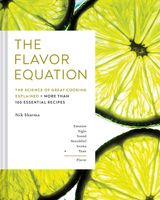Advertisement
Qualifications to be a Taste
Appears in
By Nik Sharma
Published 2020
When scientists study taste, they measure the response of the brain, nerves, and taste receptors (if they’ve identified them) by recording the electric and biochemical responses to different tastants or foods. These experiments help scientists determine whether the response indeed qualifies as a taste.
One of the most important experimental tasks is identifying a receptor that responds specifically to the taste molecule. Sometimes, scientists find more than one type of receptor to be responsive to a taste; bitter-tasting foods can kick off more than twenty-five types of taste receptors.

